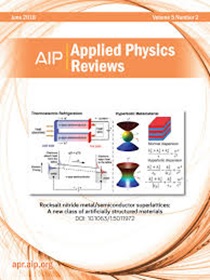In vivo delivery systems for CRISPR genome editing: Viral and non-viral carriers
IF 11.6
1区 物理与天体物理
Q1 PHYSICS, APPLIED
引用次数: 0
Abstract
For a long time, efficient and safe gene delivery has been a key issue in gene therapy. In particular, after the Nobel Prize in Chemistry for clustered regularly interspaced short palindromic repeat (CRISPR) technology in 2020, the focus on delivery systems for genome editing has grown. In this review, we introduce the recent trends in various CRISPR delivery systems. First, we explain the impact of CRISPR in clinical settings and its history. We then focused on the physics of gene delivery systems, particularly regarding the migration of nanoparticles (NPs) under flow, cellular uptake, and formulation using microfluidics. Subsequently, various CRISPR delivery systems, both viral and non-viral, and their applications in disease therapy were introduced. Viral carriers include lentiviruses, adeno-associated viruses, and viral capsids. Exosomes, silica NPs, polymeric NPs, and lipid NPs are representative non-viral gene delivery carriers. We mainly focused on studies demonstrating promising results in animal models, not stopped at cell test considering their future potential for human application.CRISPR基因组编辑的体内传递系统:病毒和非病毒载体
长期以来,高效、安全的基因传递一直是基因治疗中的关键问题。特别是,在2020年因聚集规律间隔短回文重复序列(CRISPR)技术获得诺贝尔化学奖后,对基因组编辑传递系统的关注有所增加。在这篇综述中,我们介绍了各种CRISPR传递系统的最新趋势。首先,我们解释了CRISPR在临床环境中的影响及其历史。然后,我们将重点放在基因传递系统的物理学上,特别是关于纳米颗粒(NPs)在流动、细胞摄取和微流体配方下的迁移。随后,介绍了各种CRISPR传递系统,包括病毒和非病毒,以及它们在疾病治疗中的应用。病毒载体包括慢病毒、腺相关病毒和病毒衣壳。外泌体、二氧化硅NPs、聚合物NPs和脂质NPs是代表性的非病毒基因传递载体。我们主要关注在动物模型中显示有希望的结果的研究,而不是停止于细胞测试,考虑到它们未来在人类应用中的潜力。
本文章由计算机程序翻译,如有差异,请以英文原文为准。
求助全文
约1分钟内获得全文
求助全文
来源期刊

Applied physics reviews
PHYSICS, APPLIED-
CiteScore
22.50
自引率
2.00%
发文量
113
审稿时长
2 months
期刊介绍:
Applied Physics Reviews (APR) is a journal featuring articles on critical topics in experimental or theoretical research in applied physics and applications of physics to other scientific and engineering branches. The publication includes two main types of articles:
Original Research: These articles report on high-quality, novel research studies that are of significant interest to the applied physics community.
Reviews: Review articles in APR can either be authoritative and comprehensive assessments of established areas of applied physics or short, timely reviews of recent advances in established fields or emerging areas of applied physics.
 求助内容:
求助内容: 应助结果提醒方式:
应助结果提醒方式:


